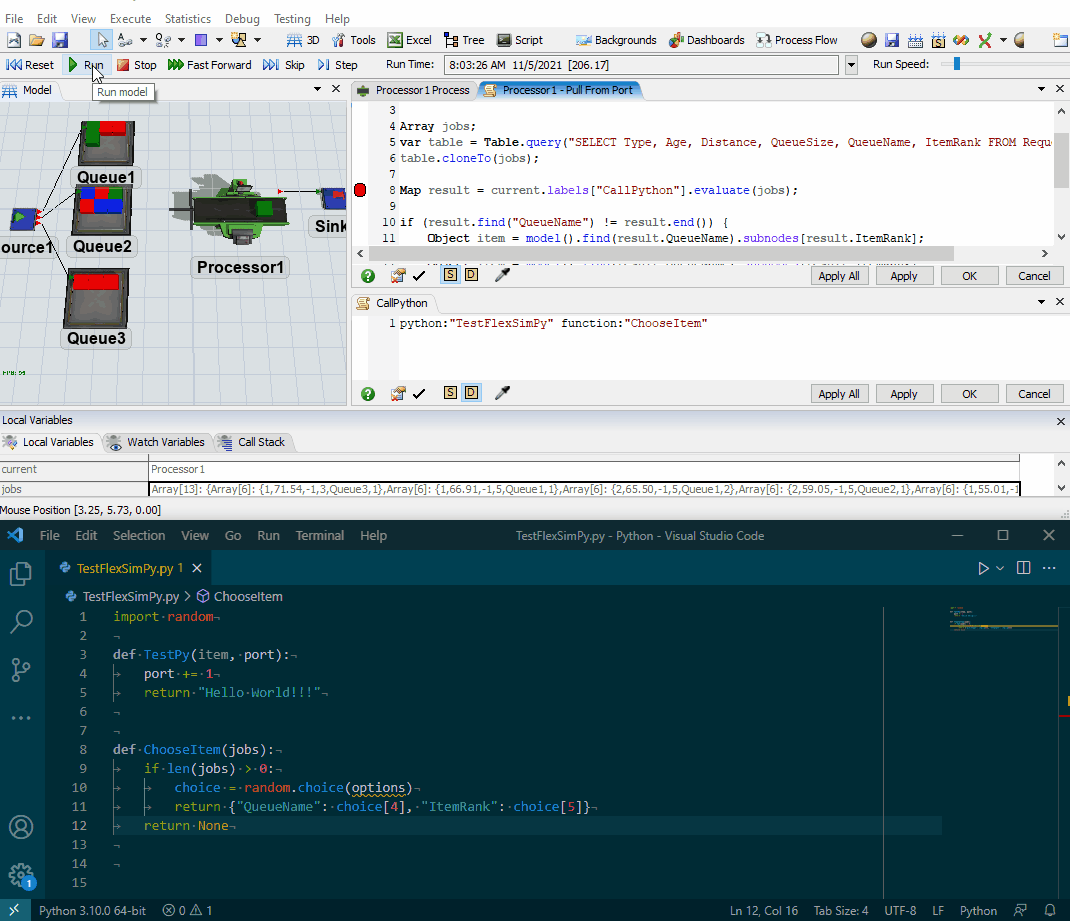I have seen many posts in the forum regarding Python and Flexim integration.
After reading most of them, my understanding is that:
- There's no "easy" way of connecting Python with Flexim (with easy I mean without having to master client-server connections, dlls, etc).
- Your FlexSim Development Team is working towards easing this integration, but specifically for Reinforcement Learning (RL) applications.
My question is:
Are you planning, maybe for the near future, to provide a "standard" way (for non-programmers, not limited to RL) to connect Python and FlexSim?
In my opinion, having this possibility would facilitate very much the work of simulation engineers and data scientist both in industrial and in academic environments, where Python is becoming ubiquitous, and where there is not much time to be invested in the connection side of the problem (but rather on the python code or on the simulation).
Specifically, what I have in mind regarding the connection between FlexSim-Python, is the academic concept of "simheuristics": https://www.sciencedirect.com/science/article/pii/S221471601500007X. In summary, "simheuristics" require the simulation (FlexSim) and some algorithm/metaheuristic (written in Python) to work closely together, i.e passing information back and forth seamlessly (simulation outputs, re-starting the simulation at certain stages, updating objects...).
I am not assuming that any of this is easy to implement, but this "question" tries only to encourage the development of the software in this direction should you also consider it of interest.
Thank you very much in advance and congratulations for the good work.

